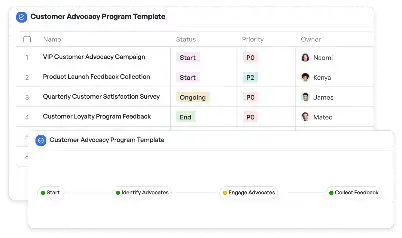Robot Application Lubrication Interval Template
Achieve project success with the Robot Application Lubrication Interval Template today!

What is Robot Application Lubrication Interval Template?
The Robot Application Lubrication Interval Template is a specialized tool designed to streamline the scheduling and execution of lubrication tasks for robotic systems. In industries where robots play a critical role, such as manufacturing, logistics, and healthcare, maintaining optimal lubrication intervals is essential to ensure smooth operation and prevent wear and tear. This template provides a structured approach to track lubrication schedules, select appropriate lubricants, and document maintenance activities. By using this template, teams can avoid costly downtime, extend the lifespan of robotic components, and maintain high operational efficiency. For instance, in an automotive assembly line, where precision and reliability are paramount, this template ensures that every robotic arm and joint receives timely lubrication, reducing the risk of mechanical failures.
Try this template now
Who is this Robot Application Lubrication Interval Template Template for?
This template is ideal for maintenance teams, robotics engineers, and operations managers who oversee the upkeep of robotic systems. Typical users include professionals in industries such as manufacturing, where robots are used for assembly and welding; logistics, where automated conveyor belts and robotic arms handle goods; and healthcare, where precision robots assist in surgeries. For example, a maintenance engineer in a factory can use this template to schedule and document lubrication tasks for robotic arms, while a robotics engineer in a logistics company can ensure that automated systems operate smoothly with minimal interruptions.

Try this template now
Why use this Robot Application Lubrication Interval Template?
Robotic systems often face specific challenges, such as wear and tear due to high-frequency operations, exposure to harsh environments, and the need for precise movements. Without a structured approach, teams may overlook critical lubrication tasks, leading to increased downtime and repair costs. The Robot Application Lubrication Interval Template addresses these pain points by providing a clear framework for scheduling and executing lubrication tasks. For example, it helps teams identify the optimal lubrication intervals based on usage patterns, select the right lubricants for specific components, and document maintenance activities for compliance and future reference. By using this template, teams can ensure that their robotic systems remain reliable, efficient, and ready to meet operational demands.

Try this template now
Get Started with the Robot Application Lubrication Interval Template
Follow these simple steps to get started with Meegle templates:
1. Click 'Get this Free Template Now' to sign up for Meegle.
2. After signing up, you will be redirected to the Robot Application Lubrication Interval Template. Click 'Use this Template' to create a version of this template in your workspace.
3. Customize the workflow and fields of the template to suit your specific needs.
4. Start using the template and experience the full potential of Meegle!
Try this template now
Free forever for teams up to 20!
The world’s #1 visualized project management tool
Powered by the next gen visual workflow engine




